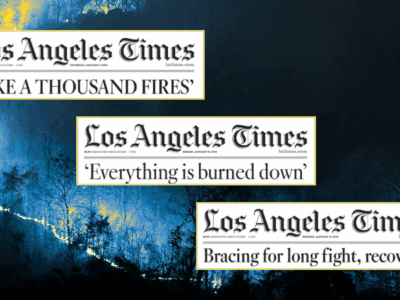Of Pistachios and Water Features
What might be included in the SB 131’s CEQA exemption for advanced manufacturing may surprise you
One of the most controversial provisions of SB 131, which created a range of new CEQA exemptions, was an exemption for “a facility for advanced manufacturing, as defined in Section 26003, if the project is located on a site zoned exclusively for industrial uses.” But what on earth might that cover? Is this a broad or narrow exemption? What kinds of projects are we exempting from environmental review?
With a term like advanced manufacturing, you might suspect projects relating to semiconductors, maybe batteries and electric vehicles, or robotics. And the definition of “advanced manufacturing” in Section 26003 (both as amended in legislation this year, and the text in place before that amendment, the relevant definition was enacted in 2012 in SB 1128) seems to invoke those kind of projects, but is also fairly vague and broad:
(1) (A) “Advanced manufacturing” means manufacturing processes that improve existing or create entirely new materials, products, and processes through the use of science, engineering, or information technologies, high-precision tools and methods, a high-performance workforce, and innovative business or organizational models utilizing any of the following technology areas:
(i) Microelectronics and nanoelectronics, including semiconductors.
(ii) Advanced materials.
(iii) Integrated computational materials engineering.
(iv) Nanotechnology.
(v) Additive manufacturing.
(vi) Industrial biotechnology.
(B) “Advanced manufacturing” includes any of the following:
(i) Systems that result from substantive advancement, whether incremental or breakthrough, beyond the current industry standard, in the production of materials and products. These advancements include improvements in manufacturing processes and systems that are often referred to as “smart” or “intelligent” manufacturing systems, which integrate computational predictability and operational efficiency.
(ii) (I) Sustainable manufacturing systems and manufacturing technologies that minimize the use of resources while maintaining or improving cost and performance.
(II) Sustainable manufacturing systems and manufacturing technologies do not include those required to be undertaken pursuant to state or federal law or regulations, air district rules or regulations, memoranda of understanding with a governmental entity, or legally binding agreements or documents. The State Air Resources Board shall advise the authority to ensure that the requirements of this clause are met.
But, what in practice do these terms mean? And what on earth is this definition doing in the first place, before SB 131 was enacted?
It turns out that Public Resources Code 26003 defines the kinds of projects (among which are advanced manufacturing) that are eligible for public support by the California Alternative Energy and Advanced Transportation Financing Authority (CAEATFA). Public support includes bonds, as well as a sales and use tax exemption for approved projects. And we can look at a recent report from July 2024 from CAEATFA to get a sense of what kinds of “advanced manufacturing” projects might qualify under SB 131. The report lists all the projects approved by CAEATFA for various forms of financial support going back through 2012, when the advanced manufacturing provision was added. (Again, while these projects were approved under the version of Section 26003 that existed before the amendments this year, the relevant statutory text was identical.) The report is linked here. Some of the approved projects might fit what you might expect from “advanced manufacturing,” such as semiconductor fabrication, or advanced robotic surgical systems and tools. And some kinds of projects might plausibly have some kind of environmental connection that maybe, just maybe, could justify a CEQA exemption, such as plastic recycling, or lithium ion batteries, or electric vehicle charging station production.
But there are a whole lot of projects that are just industrial projects. Perhaps they are good projects, that use less energy, or have innovative production design. But I’m not sure what the rationale is for a blanket CEQA exemption for industrial projects, even good industrial projects, and even if they are in industrial zones. At least the legislature hasn’t provided that kind of justification. For infill housing, we can argue that the environmental benefits of infill housing generally outweigh the environmental costs, so we should provide a CEQA exemption. And for other projects exempted under SB 131 such as child care centers or health care centers, one might assume in general environmental impacts would be minimal, and given the important social benefits of the projects, a CEQA exemption is justified. But consider the following examples of approved “advanced manufacturing” projects, and whether their environmental benefits should be considered to justify exemption from environmental review, or whether we should assume they will have minimal environmental impacts:
- Beverage production (for a brewery)
- Water feature manufacturing
- Pistachio processing and production
- Water bottling facility
- Corrugated packaging manufacturing
- Metal forging
- Soil amendments production
- Tooling and metal stamping
- Medium density fiberboard production
And one of my favorites on the list, specialized concrete ring manufacturing, which was for the “Boring Corporation”, Elon Musk’s company that builds narrow tunnels for cars.
(A full list of the kinds of projects approved for support as “advanced manufacturing” is at the end of the blog post.)
In other words, CEQA now carries an exemption of potentially very broad scope, vaguely defined, that appears to allow almost any industrial activity to be approved without environmental review in an industrial zone. Is this what the legislature intended to do?
And it’s worse than that. At least these are the types of projects approved by a state agency for public support. CAEATFA’s regulations at least have a detailed analysis of the environmental benefits of the projects it approves for public support. But the application of the CEQA exemption does not require approval by a state agency, and CAEATFA’s regulations are not part of the CEQA exemption. It just takes a local government to conclude that the project fits within the exemption, and the project is in an industrial zone (and not on natural and protected lands). There might presumably be some judicial review of whether the statutory definition applies to the project, but given the vagueness of the definition above, it’s possible that courts might defer to local governments.
The legislature has just created an industrial-sized loophole through CEQA. And not for residential infill. But for the kinds of projects most likely to produce harmful environmental impacts, the kinds of projects that environmental law was originally enacted to address.
Perhaps the legislature should reconsider what it did here.
The full list of types of projects approved by CAEATFA through July 2024.
- Plastic recycling
- Advanced carpet recycling
- Beverage production (for a brewery)
- Advanced food production
- Water feature manufacturing
- Advanced robotic surgical systems and tools
- Aerospace manufacturing
- Insulin pumps and related products manufacturing
- Semiconductor fabrication
- Medical device manufacturing
- Lithium ion batteries
- Lithium recovery and processing
- Precious metals recycling
- Lithium battery cell manufacturing
- Medical diagnostic test production
- Biomass processing and fuel production
- Solar photovoltaic manufacturing
- Biopharmaceutical manufacturing
- Pistachio processing and production
- Sequestered carbon manufacturing
- AirCarbon manufacturing
- Water bottling facility
- Specialty aerospace fastener manufacturing
- Plug-in hybrid vehicle manufacturing
- Defense and aerospace manufacturing
- Composites manufacturing
- Corrugated packaging manufacturing
- Metal forging
- Soil amendments production
- Tooling and metal stamping
- Electric bus manufacturing
- Medium density fiberboard production
- Electric vehicle charging station production
- Food grade recycled packaging manufacturing
- Thin steel plate manufacturing
- Peptide pharmaceutical manufacturing
- Silicon anode powder manufacturing
- Specialized concrete ring manufacturing
- Passenger seating system manufacturing
- Advanced packaging label production
- Fuel grade hydrogen production
- Health and beauty products
- Animal feed and organic fertilizer
- Cadiovascular technology manufacturing
- Pre-engineered structural shell production
- Plastic bottle manufacturing
- Residential insulation manufacturing
- Rare earth materials production
- Electric vehicle battery manufacturing
- Carbon black production
- Optical ferrule manufacturing
- CNC machine manufacturing
- Corn oil production
- Omega oil production
- Recycled paper bottles manufacturing
- Aero engine ring forging
- Beverage bottling manufacturing
- Turned part manufacturing
- Multifamily unit building component manufacturing
- Additive manufacturing
- Rail transportation manufacturing
- Fire retardant manufacturing
- Plastic recycling and thermoform product manufacturing







Reader Comments